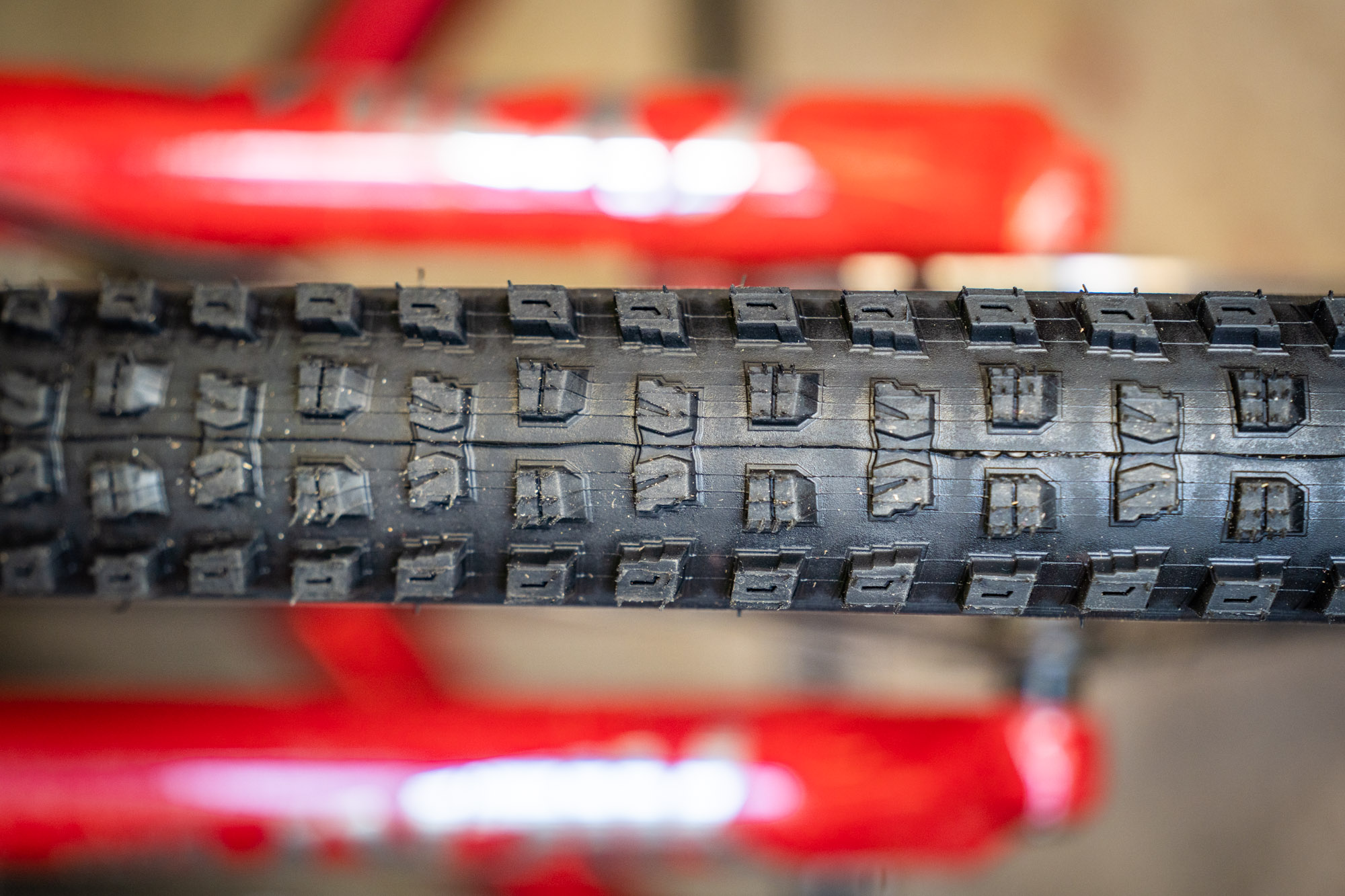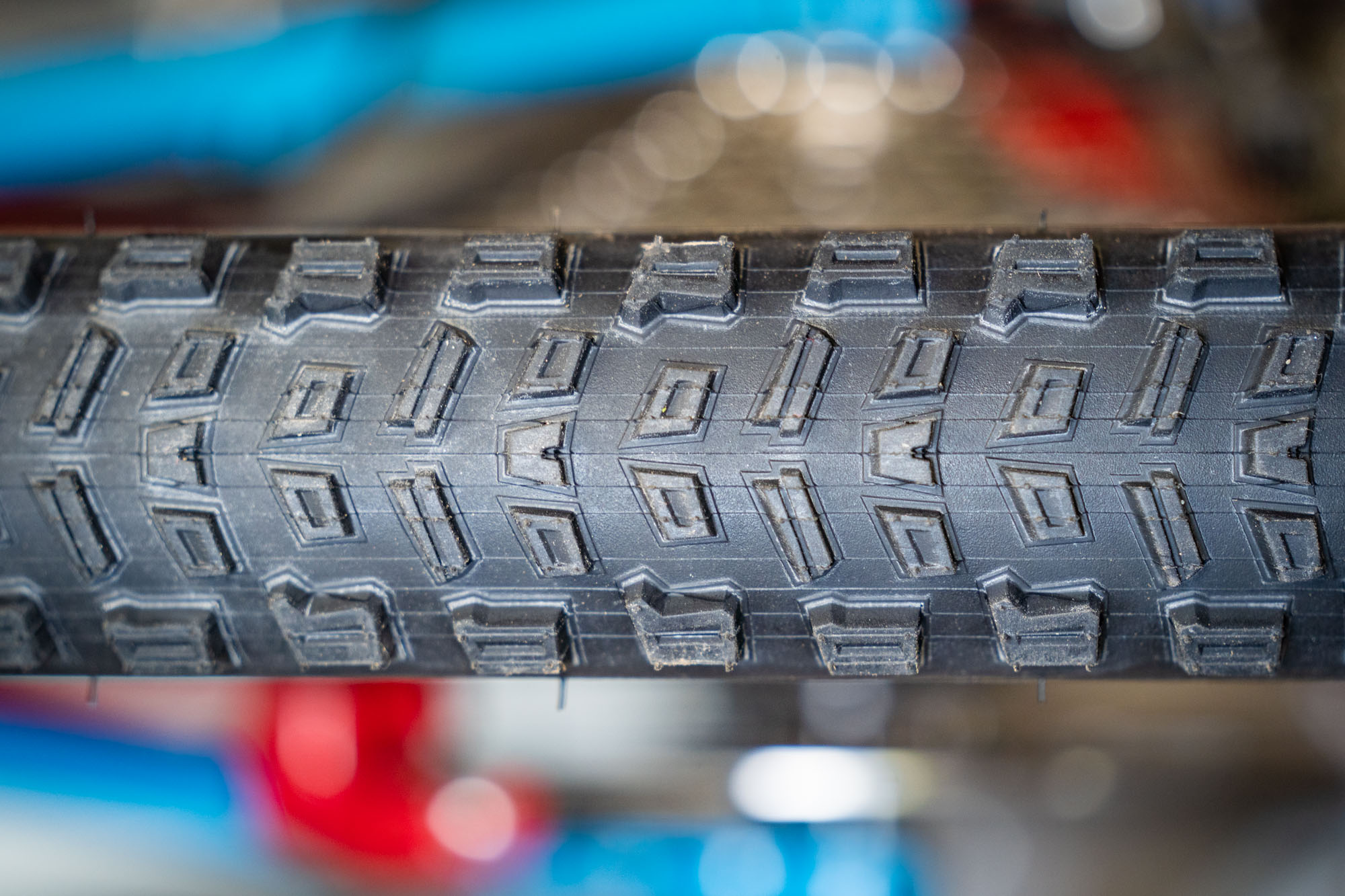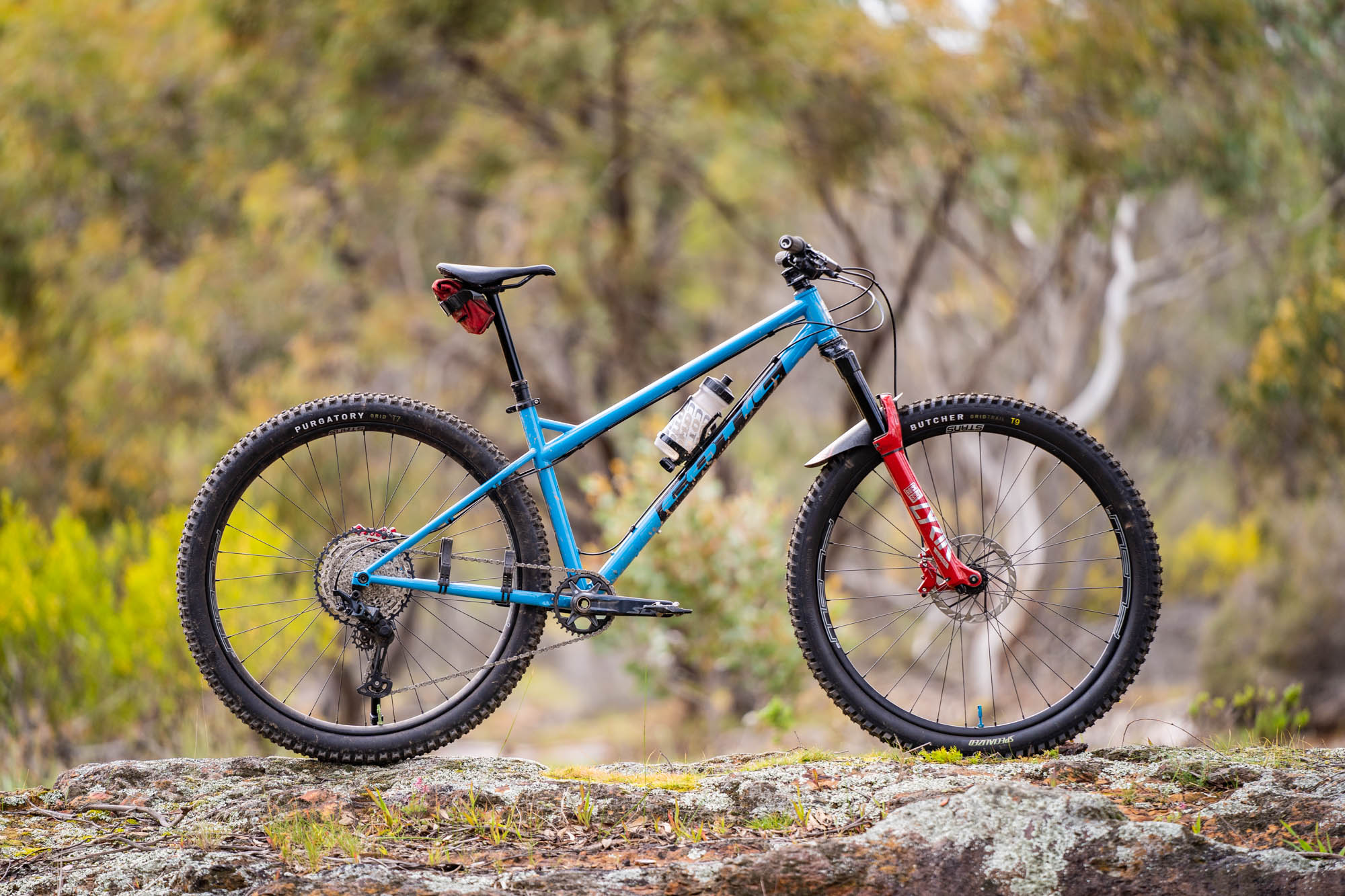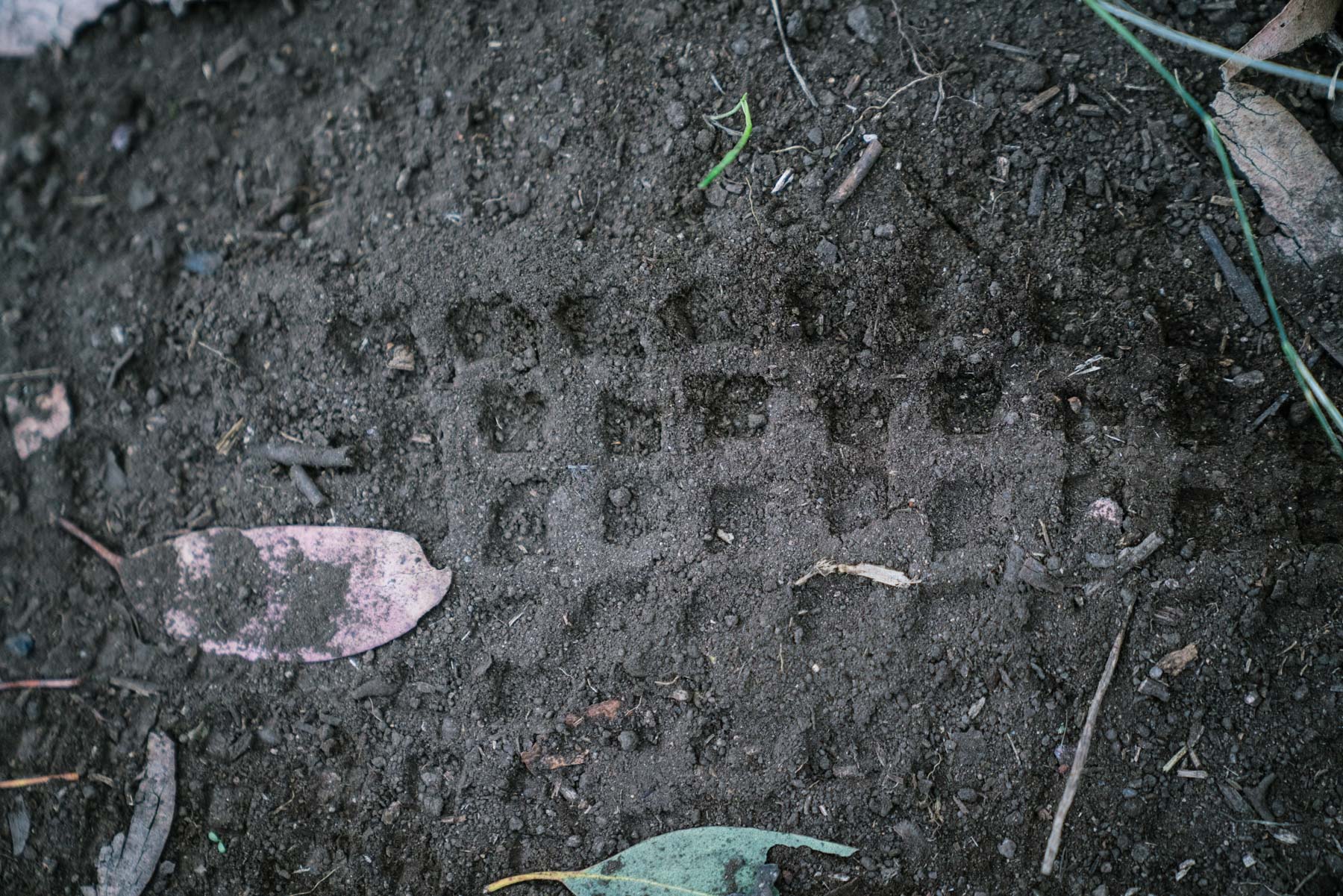Mick & Wil review the new Specialized tyre range
Choosing the best mountain bike tyre for your needs can be an absolute quagmire. Not only do you need to pick a brand and a tread pattern that you like the look of, riders will also need to decipher a stack of numbers, logos and marketing jargon to determine what’s going to work for their local trail conditions and riding demands. Options are good, but the sheer array of options on the market means it’s easy to feel bamboozled.
To help simplify things, Specialized has totally overhauled its mountain bike tyre lineup for 2021. There’s a fresh naming system, along with the arrival of new rubber compounds and casing tech. Despite there actually being more options than ever before, the use of distinct labels for all the different casings and rubber compounds has made the lineup vastly easier to navigate.

In this article we’ll be focussing on the tech behind the new generation trail tyres, which includes the Specialized Butcher, Eliminator and Purgatory. The new naming system also extends to the lighter weight Ground Control, Fast Trak and Renegade tyres, but we’ll save those for a later date.
Before we dive into our experience of riding the latest trail tyres though, let’s take a brief look behind the scenes to see exactly how Specialized arrived at this point.

Developing a new tyre range from scratch
In the past, Specialized tyres have been produced under license by the likes of Kenda and CST (Maxxis). This is a common and sensible practice for brands such as Specialized and Bontrager, as it allows them to leverage the vast amount of manufacturing expertise from those specialist tyre factories, while drawing from an existing catalogue of proven technologies, rubber compounds and casing options.
While no doubt the easier route, there are downsides to this kind of licensing arrangement. There are constraints on what those factories can offer, and if any new rubber or casing tech is developed by one brand, there are no guarantees this tech won’t be absorbed by the other brands that are also being manufactured under the same roof.
It was for these reasons that around seven years ago, Specialized decided to seek out a new manufacturer to enter into an exclusive partnership with. That manufacturer is still producing tyres under its own name, but Specialized is otherwise the only brand that it’s working with. This has allowed the Specialized team to develop unique tread patterns, rubber compounds and casing technologies, free from the shackles of the one-stop-tyre-shop factories.
Rubbery recipes
We’ve seen tread tweaks and new casing tech rolled out over that time, though Specialized has also invested a significant amount of resources into compound development. Tread patterns are easy to copy, but it’s really the compound that’s the secret recipe behind a mountain bike tyre.

Developing new rubber compounds is a surprisingly complex process, due to the heady combination of mechanical, chemical and process engineering that’s involved.
To help cook up its proprietary compounds, Specialized has been working with QEW – a rubber specialist based in the Netherlands. Small-scale prototype samples are developed and lab-tested, with each compound made up of 15-20 different ingredients. According to Specialized, it’s produced around 150 tyre samples each year, over the past seven years. That’s a heckuva lot of tyres!
Freshly baked
The most recent, and perhaps one of the biggest developments, has been the introduction of the brand new T9 rubber compound. This uber-sticky rubber possesses a high level of damping and a slow rebound characteristic, which makes it ideal for aggressive riding on highly technical terrain.
It isn’t just about the new T9 compound though. Over the past seven years, Specialized has rolled out a whole suite of changes to its mountain bike tyre lineup. There have been whole new tread patterns, like the Eliminator, and updates to existing tyres like the Butcher and Purgatory. We’ve also seen the introduction of the GRID, GRID Trail and GRID Gravity casings, along with other rubber compound updates.
Indeed for 2021, Specialized can now boast its most comprehensive tyre lineup yet. But with all of these new options, how exactly do you choose the best mountain bike tyre for your needs?
Tread patterns – Butcher, Eliminator & Purgatory
Firstly, let’s look at the the different tread patterns within the Specialized trail tyre range;

The Butcher is one of the most aggressive tyres from Specialized. It’s designed for trail riding and enduro racing, with a blocky tread pattern that aims to excel on loose and steep trails. The Butcher was updated in 2019, reducing the gap slightly between the centre tread and the shoulder knobs to help smooth out the transition when cornering. You’ll find the Butcher on a load of Specialized models including the Stumpjumper, Stumpjumper EVO, Enduro and Levo. It’s mostly used as a front tyre, though it’s also spec’d on the rear of the Kenevo SL and Demo for maximum grip.

The Eliminator is a similarly aggressive tyre that shares identical cornering blocks to the Butcher. The centre tread pattern is different through, with smaller knobs and more of them. They’re also a bit shorter and feature tighter gaps, which makes the Eliminator a faster-rolling tyre that’s generally suited to drier conditions and more hardpacked trails. It can be run as a front tyre, but the slightly rounded profile is better suited to rear use. You’ll find the Eliminator spec’d on the back of the Stumpjumper EVO, Enduro and Levo models, with a Butcher up front.

The Purgatory is a lighter duty trail tyre that’s designed to be faster rolling than both the Butcher and Eliminator. Its tread pattern was totally redesigned in 2019, adopting more rectangular block shapes compared to the triangular knobs of old. The wide-profile cornering blocks feature lateral reinforcement for increased stability during cornering, while cutouts and siping throughout helps to increase braking bite. This makes the Purgatory ideal for rear tyre use, and you’ll find it on the back of both the Stumpjumper and the Fuse, where it’s paired to a Butcher up front.
Casing options – GRID, GRID Trail & GRID Gravity
Specialized offers five different casing options throughout its mountain bike lineup. You’ll find the two lightest options (the S-Works and Control casings) on the more XC-oriented tyres. For the burlier trail tyres, there’s the GRID, GRID Trail and GRID Gravity casings;

The GRID casing is designed for light-to-moderate trail riding duties. It features a 60tpi construction just like the lighter Control casing, but it adds strips of a heavy-duty polyamide weave in the sidewalls – not unlike a Maxxis EXO tyre. This improves resistance against sidewall cuts and tears, while also reducing the chance of pinch-flats. Because the reinforcement is only found in the sidewalls though, the GRID casing maintains flexibility, particularly around the crown of the tyre. The Purgatory, Eliminator and Butcher are offered with a GRID casing option.

The GRID Trail casing takes the same basic construction as a GRID tyre, but adds in another full layer of polyamide that runs from bead-to-bead (similar to a Maxxis EXO+ tyre). This added material makes it heavier, and it also makes the tyre stiffer too. However, you get a significant increase in pinch-flat resistance, and it offers greater cornering stability at lower pressures – ideal for harder charging trail riders and enduro racers on bigger travel bikes. Both the Butcher and Eliminator are offered with a GRID Trail casing option.

The GRID Gravity casing is the newest and burliest of the lot. It still uses a folding kevlar bead, but it’s significantly thicker and heavier than a GRID Trail tyre due to its use of a dual-ply 60tpi construction, with a rubber Apex added around each bead (a bit like a Maxxis DoubleDown tyre). This boosts pinch-flat protection and sidewall stability further, though it does mean a GRID Gravity tyre is quite heavy, making it better suited to long travel e-MTB riders and hard-charing enduro racers who want maximum reliability. Both the Butcher and Eliminator can be had with the GRID Gravity casing.
T9, T7 & T5 rubber compounds – what do they mean?
With all of the new Specialized tyres, you’ll now spot the letter ‘T’ on the hot patch, along with a number next to it – a ‘9’ or ‘7’ for example. The T refers to the tread compound, and the number refers to the degree of damping and grip. This operates on a scale of 1-10, with T1 meaning the least amount of damping, and T10 meaning the most amount of damping.

T5 is the firmest compound option. As such, it’s mostly found on the XC tyres, including the Fast Trak and Ground Control. The T5 compound offers minimum rolling resistance, along with a high wear rate and cut resistance.
T7 is an intermediate trail compound. It’s the most common rubber compound across the Specialized tyre lineup, due to its balance between rolling resistance and grip. Compared to T5, the T7 compound is claimed to offer increased damping for a smoother ride.
T9 is the gravity compound. Its focus is on delivering maximum grip and damping, with a slower rebound characteristic to improve the tyre’s ability to conform to the terrain.

Most of the new Specialized tyres feature a single rubber compound that’s used across the entirety of the tread. However, there are dual compound options. Some of the XC tyres are available with a T5/T7 dual compound, while the Eliminator is also offered in a T7/T9 dual compound option. The dual compound tyres use the firmer rubber for the centre tread, and the softer rubber for the outer shoulder blocks.
On the note of compounds, it’s worth pointing out that T5 and T7 aren’t actually new – these proprietary compounds have existed under the Gripton label for a couple of years now. T9 is a brand new compound however, and it’s a big story with the new Specialized tyre lineup.
Testing the new Specialized Butcher, Eliminator & Purgatory
Over the past 12 months we’ve tested a variety of new Specialized bikes that have come fitted with the latest trail tyres. That includes the Stumpjumper, the Stumpjumper EVO, the Levo and Kenevo SL.
Additionally, we’ve also fitted a spread of the new tyres across our own long-term test bikes. That’s allowed us to test out a variety of tyre widths, casing options and compounds, to get a comprehensive experience of the broader range.
Canyon Spectral:ON
- Front tyre: Specialized Butcher GRID Trail T9, 29×2.6in – $100 AUD (1,119g confirmed)
- Rear tyre: Specialized Eliminator GRID Gravity T7/T9, 27.5×2.6in – $110 AUD (1,210g confirmed)

Our Canyon Spectral:ON CF 8 test bike originally came fitted with a set of Maxxis Minion 3C MaxxTerra tyres, with a 2.5in DHF on the front and a 2.6in DHR II on the rear. This is a great combo, but in our experience the casing choice (EXO front, EXO+ rear) is too dainty for an e-MTB. Indeed the rear tyre has suffered numerous punctures during our time with it, including one right on the bead that has since rendered it unsealable.
With an eye on improving reliability and grip to help push the Spectral:ON a little further, we upgraded to a much burlier setup with a Butcher GRID Trail T9 on the front, and an Eliminator GRID Gravity T7/T9 on the rear.
They’re both significantly heavier-duty compared to the stock tyres. Wil, a 68kg rider, has been able to run lower pressures – 20psi in the front and just 21psi in the rear.
The GRID Gravity casing on the rear tyre feels significantly stiffer and much more supportive compared to the Maxxis EXO+ tyre it replaced. Even at close to 20psi it’s incredibly stable, and so far it’s shrugged off a load of rocky abuse despite being run without an insert on a heavy e-MTB. It does dull the ride somewhat though, a bit like changing from a Fox Float DPS shock to a Float X2. If you’re looking for a poppier ride quality, and you don’t require the puncture protection of the GRID Gravity casing, we’d recommend sticking to a GRID Trail tyre.
Outright traction has elevated thanks to the Butcher’s gooey T9 rubber compound. It’s significantly softer than the Maxxis 3C MaxxTerra compound it replaced, being more comparable to the 3C MaxxGrip compound. Combined with the Butcher’s tread siping and big shoulder blocks, cornering grip is insanely good, boosting front-end confidence up a few notches.
It’s similarly sticky and predictable out back, with the Eliminator’s shoulder blocks also getting the T9 treatment for deep angle cornering bite. The centre tread employs the firmer T7 compound, which reduces rolling resistance and improves durability – something worth bearing in mind for an e-MTB that’s likely to see a lot of hard riding.

The downside of the tyre change has been more drag – something that’s noticeable despite having a motor. The extra rotational mass requires more effort during repeated accelerations on a technical climb, and the bike slows down faster when you stop pedalling. This will also have an effect on battery range – you can experience up to a 10% reduction after fitting heavier and stickier tyres.
We’re happy with that tradeoff though, especially given how much harder we can now ride the Spectral:ON. The tougher rear tyre casing inspires a load of confidence, and there’s significantly better damping front and rear, with a stronger connection to the ground and a calmer demeanour through the rough.
Cotic BFeMAX
- Front tyre: Specialized Butcher GRID Trail T9, 29×2.6in – $100 AUD (1,119g confirmed weight)
- Rear tyre: Specialized Purgatory GRID T7, 29×2.6in – $80 AUD (979g confirmed weight)

We’ve been ripping around on our Cotic BFeMAX test bike with a 2.6in wide Specialized Butcher & Eliminator combo, both with the GRID Trail casing and the previous generation Gripton rubber compound. Along with the slack geometry and 140mm RockShox Lyrik, it’s a hella capable bike. You can read Wil’s long-term review of the Cotic BFeMAX here.
In that review, we mentioned that the Eliminator GRID Trail was plenty tough, but perhaps not the most supple tyre for the rear wheel on a hardtail. This was exacerbated by the use of a CushCore Pro insert, which provides valuable rim protection but also reduces the tyre’s air volume. Rather than remove the insert, Wil decided to step down to a Purgatory T7 with a lighter GRID casing, with the aim of introducing a little more compliance and rolling speed. Up front he fitted a Butcher GRID Trail T9 – basically the same tyre as before, but in the new T9 compound.
Setup on Stan’s Flow CB7 rims with a 29mm internal width, both tyres came up a lick narrower than claimed – 2.56in front and 2.52in rear. Expect them to fill out a touch more on 32-35mm wide rims. They’re still plenty voluminous though, and Wil’s set them up with 18psi in the front and 21psi in the rear.
While the Purgatory out back is a little lighter and faster rolling than the Eliminator it replaced, overall efficiency hasn’t improved that much due to the addition of the sticky Butcher T9 up front. Riders chasing a speedy trail setup are likely to find the T9 option too slow for their liking – it is noticeably draggier than the T7 compound.

What T9 rubber does deliver though is exceptional cornering grip. Even in loose conditions, there’s an outstanding amount of adaptive traction and braking bite on standby. The tacky T9 compound has also drastically improved the Butcher’s performance in the wet – an area that it previously struggled with. They’re not as idiot-proof in the slop as a dedicated mud spike like a Shorty or Hillbilly, but for typical Australian conditions, this is a seriously grippy all-year-round tyre.
As for the Purgatory, it is much springier and more comfortable too. It’s well suited to hardpack trail conditions, where it delivers a consistent feel and excellent braking performance. The shallower tread depth means it doesn’t dig in as much on loose technical climbs compared to the Eliminator, and cornering support isn’t quite as robust either. It is easier to push into a controllable drift on dusty trails though, which suits the naughty character of the raked-out BFeMAX wonderfully.
Specialized Levo
- Front tyre: Specialized Butcher GRID Trail T9, 29×2.3in – $100 AUD (1,078g confirmed weight)
- Rear tyre: Specialized Eliminator GRID Trail T7, 27.5×2.3in – $90 AUD, (926g confirmed weight)

We’ve been riding the Gen 3 Specialized Levo ever since we took it up to Mt Buller for the Ride High Country Test Sessions. Six months on, the Levo continues to impress with its mullet setup, superb suspension and versatile handling. It’s a throughly refined package, as one would expect given the price tag.
Out of the box the Levo comes fitted with a 2.6in wide Butcher T9 on the front and an Eliminator T7 on the rear – both with the GRID Trail casing. It’s a terrifically versatile setup and a great match for the Levo’s all-day, every-day attitude, with the Butcher T9 again being a real standout thanks to its tenacious traction.
While we’ve not had any issues with those tyres, Mick was curious to see how the bike would handle with some slightly narrower rubber. Handily, Specialized offers most of its mountain bike tyres in both 2.6in and 2.3in widths. That allowed us to seek out a near-identical tyre combo with the same tread pattern, casing and rubber compound, but in the 2.3in width.
Mounted to 30mm rims, these tyres actually measure up bigger than claimed at 2.42in wide. They’re a little lighter than the 2.6in tyres they replaced, though only by around 40-50g per tyre.
While the difference in width sounds minor, the ride quality is far more obvious. The 2.3in tyres offer notably greater precision, an attribute that Mick has appreciated on rougher high-speed doubletrack. Picking a line through deep ruts and vast gullies has become more intuitive, with less penalty for catching an edge. There’s also less overall wobble when boosting jumps and landing on off-camber surfaces.
The smaller volume does require higher pressures. Having previously run 17-18psi with the 2.6in tyres, Mick’s now running 18psi on the front and 20psi on the rear. There’s more feedback due to a reduction in damping, so riders who are chasing maximum comfort (like Wil with his Cotic hardtail) are better off sticking to the bigger 2.6in wide tyre. The tradeoff is the increased precision and better cornering stability from the narrower 2.3in tyres, attributes that aggressive and jump-happy riders will appreciate.
Flow’s Verdict
Ever since we first rode the new Butcher T9 on the latest Stumpjumper EVO, we’ve been consistently impressed with the performance of the latest Specialized tyre range.
The Butcher, Eliminator and Purgatory tread designs are all well known, but the addition of new proprietary rubber compounds has raised the performance bar significantly. The revamped naming system has also made it easier to choose the right front and rear tyre combinations, and the availability of two widths and 2-3 casing options across most tread patterns gives riders plenty of choice for fine-tuning their bike’s grip and feel.

Furthermore, tubeless installation has consistently been a breeze on all the rims we’ve used, and tyre inserts are yet to cause any workshop tantrums. All tyres have held air pressure consistently, and we’ve had excellent experience with casing durability, particularly with the latest GRID Trail and GRID Gravity options. Only two tyres out of the 14 we’ve tested have suffered a puncture, one of which sealed up on its own, the other that required a plug and has carried on without issue since. We’re also happy to report that the days of Specialized tyres coming in drastically undersized are long gone, with the latest 2.3in tyres actually measuring a touch bigger than claimed.
With all the investment that Specialized has poured into its mountain bike tyre development, it’s no surprise that pricing has increased. There’s no longer a noticeable price gap with the high-end options from Maxxis, Schwalbe and Continental, though we’d argue the performance gap has closed in too. Indeed the gooey Butcher T9 and Eliminator T7/T9 are some of the best aggro trail tyres we’ve tested in recent memory.
Given just how big of an improvement the new T9 compound is, we’re eager to see what else is cooking up in the tyre development lab. In the meantime, we can confidently say that the new rubber compounds and casing options have resulted in the best performing tyres we’ve ever tested from Specialized.



























